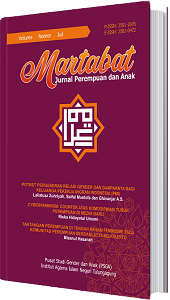Abstract
The film Penyalin Cahaya, which was released in 2021, garnered public attention because it tackled the issue of sexual harassment in educational institutions. Roland Barthes' semiotic analysis delves deeply into the iconic signs that depict various elements in the film. The research approach used in this study is qualitative, employing a descriptive method. The results show that the film Penyalin Cahaya portrays several signs related to cases of sexual harassment, affecting not only women but also men. Additionally, the film depicts the settlement of sexual harassment cases, where the perpetrators are often those who hold power and can describe the dominant ideological factors that still exist in society. In this film, the perpetrators of sexual harassment abuse their power and their parents' wealth to cover up their crimes and silence their victims. Consequently, the victims must fight against the unjust systems in place and seek justice for the sexual harassment they endured
References
Chandler, Daniel. Semiotics: The Basics. Routledge, 2022.
Chapman, Anita S. Violence and Women: Exploring the Medea Myth. Chiron Publications, 2020.
Dianiya, Vicky. “Representation of Social Class in Film (Semiotic Analysis Of Roland Barthes Film Parasite).” Profetik Jurnal Komunikasi 13, no. 2 (2020): 212–226.
Hedgecock, Jennifer. Cultural Reflections of Medusa: The Shadow in the Glass. London: Routledge, 2019.
Kirana, Fransisca Putri, and Sunarto. “Resistensi Pelecehan Seksual Dalam Film Bombshell.” Interaksi Online 10, no. 3 (2022): 117–127.
Maharani, Adinda, and Acep Iwan Saidi. “Visual Representation of Hedonism in ‘Parasite Film.’” Jurnal Pakarena 6, no. 1 (2021): 40–48.
Plantinga, Carl. Screen Stories: Emotion and the Ethics of Engagement. USA: Oxford University Press, 2018.
Putri, Novie Purnia. “Viktimasi Perempuan Human Trafficking.” Martabat: Jurnal Perempuan dan Anak 3, no. 1 (2019): 205–224.
Sarah, Rima, and Nurholis. “An Analysis of Moral Values in The Film Hafalan Shalat Delisa: Sociology of Literature Approach.” The Gist 5, no. 1 (2022): 84–93.
Simanjuntak, Marudut Bernadtua, Irma Rasita GloriaBarus, and Ira Resmayasari. “Analysis Violence in City of God Film Directed.” Journal of Advanced English Studies 4, no. 1 (2021): 1–6.
Umami, Riska Hidayatul. “Cyberfeminisme: Counter Atas Komodifikasi Tubuh Perempuan Di Media Baru.” Martabat: Jurnal Perempuan dan Anak 4, no. 1 (2020): 111–136.
Vollhardt, Johanna Ray, Mukadder Okuyan, and Helin Unal. “Resistance to Collective Victimization and Oppression.” Current Opinion in Psychology 35 (2020): 92–97.
Wibisono, Panji, and Yunita Sari. “Analisis Semiotika Roland Barthes Dalam Film Bintang Ketjil Karya Wim Umboh Dan Misbach Yusa Bira.” Jurnal Dinamika Ilmu Komunikasi 1, no. 1 (2021): 30–43.
Zuhri, Saifuddin, and Diana Amalia. “Ketidakadilan Gender Dan Budaya Patriarki Di Kehidupan Masyarakat Indonesia.” Murabbi: Jurnal Ilmiah dalam Bidang Pendidikan 5, no. 1 (2022): 17–41.

This work is licensed under a Creative Commons Attribution-ShareAlike 4.0 International License.

